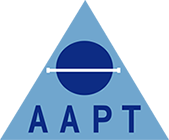News
AAPT Conference 2015 - the Morning Report
Student member Nicky Wright reports on the morning session at Conference 2015
The 11th Annual conference was held on the 19th September and took place in the Centre for Health Science, Inverness, Scotland.
Jill Hamilton MAAPT chaired the morning session, she introduced the speakers throughout the morning and keep all informed of who the next speaker was, with a brief overview of the subject.
Evisceration – What to look for
Dr Kirsty Lloyd, Imperial College
APT’s are often responsible for teaching evisceration techniques to trainee pathologists.
Trainee pathologists can find the mortuary very daunting; they can have many fears and concerns. APTs are able to offer help and experience, while helping to install confidence, as long as this is carried out properly.
Trainee pathologists are experience physicians but will require help and patience so that they become comfortable and confident whilst eviscerating.
An APT can Help by:
• Offering helpful evisceration advice.
• Encouragement.
• Repeating steps until trainee pathologists are confident.
• Allow enough time for evisceration to be completed.
• Step back slowly.
An APT can Hinder by:
• Being impatient.
• Rushing and applying unnecessary pressure.
• Flippant and unhelpful remarks.
• Leaving the room.
Different techniques such as a T or Y-incision could also be used to help trainee pathologists gain better access to the neck structures; however care must be taken to make sure the incision line is not visible and complies with standards set by the AAPT.
HTA does not prevent the taking of photos; however they must be taken with a camera and must not have any patient identifiable features. Photos can show pathological issues or differences of the organs while in situ.
EBOLA: Window On A Broken Healthcare System
Dr Christopher Mair, Creich Surgery, Inverness
Ebola is a group 4 pathogen and was first discovered in 1976. The latest outbreak was in 2013 and started in New Guinea and spread rapidly to Sierra Leone and Liberia. The WHO didn’t react until August 2014; cost of the outbreak was estimate around £400 million.
Dr Christopher Mair is a local GP and decided that he needed to help. He applied to the British government, was sent a letter of approval for funding, went for PPE training and then flown out to the areas that were badly affected. He described how proud he was to be able to go and also how fearful he was, as he has a young family. However this did not stop him and he was determined to help in any way that he could.
He described the conditions that he found, treatment centres were set up away from water and were essentially pop up tented hospitals with limited resources. Senior doctors refused to treat the sick and junior doctors went on strike because there was no PPE available for them.
Dr Christopher Mair states that there is no correct PPE, as long as the eyes, mouth and any wounds are covered then the risks of contracting Ebola is low, however it’s not completely risk free, as PPE has been known to fail or removed incorrectly. In all 120 care workers and 13 doctors had become infected and died and he believes the response by the West was too little too late, a vaccine could have been produced and distributed a lot quicker.
Lean The Heilan Way: Putting The 5S in Invernesssss
Laura Nairne & Kimberley Campbell, Raigmore Hospital
Laura and Kimberley works in the Histology department in the Raigmore hospital, they found the laboratory was under performing and a back log of samples was becoming harder to clear. They decide a new approach was needed to optimise time and reduce levels of tiredness and stress that resulted in an increase in staff sickness. They decide to use the 5’s approach.
5’S
Sort – Red tag and remove from area if not used.
Set in order – tape on bench and label, if the equipment remains in the area.
Shine – Clean all areas of the laboratory or mortuary.
Standardise – make rules and follow.
Sustain – make it a habit.
Quality in a laboratory setting and mortuary can be achieved by lean working – changing and adapting for getting better and improved standards.
The areas that were looked at were:
• Layout of the working area – remove clutter and equipment that is not in regularly use. Mark out areas for equipment so it’s returned and tidy.
• Staffing levels – reduce, bi-monthly meetings and 5 min huddle at the start of the day for updates.
• Computer databases – for faster booking in and efficient information collecting and sorting.
• SOP’s – condense so they are easier to read and quick to review.
Once all the steps where in place and the staff adapted to the new way of working, they found they no longer had large back logs and staff performance and productivity improved, resulting in a steady stream of work being completed on time in a much healthy working environment.
